
San Salvador Island: The Hidden Gem of The Bahamas
Discover San Salvador Island in The Bahamas, a tranquil paradise rich in history, natural beauty, and underwater adventures, perfect for both relaxation and exploration.
San Salvador Island in The Bahamas is a serene paradise that promises tranquility and adventure in equal measure. Known as the landfall island of Christopher Columbus, it is steeped in rich history and culture. As you explore its pristine beaches and crystal-clear waters, you'll find remnants of the past in the form of historical landmarks like the Dixon Hill Lighthouse and the New World Museum. San Salvador is a diver's dream with its vibrant coral reefs and diverse marine life. Snorkeling and diving enthusiasts can discover underwater caves, shipwrecks, and an array of colorful fish. The island's secluded beaches, such as French Bay and Snow Bay, offer the perfect settings for relaxation, picnics, and sunbathing away from the crowds. For nature lovers, San Salvador is a haven with its lush vegetation and unique wildlife. The island's inland lakes and nature trails provide ample opportunities for bird watching and hiking. Don’t miss the chance to visit Pigeon Creek, a natural tidal creek where you can kayak and spot various species of birds and marine life. San Salvador's small, welcoming community offers a glimpse into the Bahamian way of life. Local markets and eateries serve delicious Bahamian cuisine, ensuring that every meal is a treat. Whether you're looking for a peaceful escape or an adventurous getaway, San Salvador Island has something for everyone.
Local tips in San Salvador Island
- Visit during the dry season, from November to April, for the best weather.
- Rent a bicycle or a scooter to explore the island at your own pace.
- Pack reef-safe sunscreen to protect the coral reefs while snorkeling.
- Try the local dish 'conch salad' at a beachside eatery.
- Carry cash, as some small vendors and eateries might not accept credit cards.
San Salvador Island: The Hidden Gem of The Bahamas
San Salvador Island in The Bahamas is a serene paradise that promises tranquility and adventure in equal measure. Known as the landfall island of Christopher Columbus, it is steeped in rich history and culture. As you explore its pristine beaches and crystal-clear waters, you'll find remnants of the past in the form of historical landmarks like the Dixon Hill Lighthouse and the New World Museum. San Salvador is a diver's dream with its vibrant coral reefs and diverse marine life. Snorkeling and diving enthusiasts can discover underwater caves, shipwrecks, and an array of colorful fish. The island's secluded beaches, such as French Bay and Snow Bay, offer the perfect settings for relaxation, picnics, and sunbathing away from the crowds. For nature lovers, San Salvador is a haven with its lush vegetation and unique wildlife. The island's inland lakes and nature trails provide ample opportunities for bird watching and hiking. Don’t miss the chance to visit Pigeon Creek, a natural tidal creek where you can kayak and spot various species of birds and marine life. San Salvador's small, welcoming community offers a glimpse into the Bahamian way of life. Local markets and eateries serve delicious Bahamian cuisine, ensuring that every meal is a treat. Whether you're looking for a peaceful escape or an adventurous getaway, San Salvador Island has something for everyone.
When is the best time to go to San Salvador Island?
Iconic landmarks you can’t miss
Christopher Columbus First Landfall
Discover the historic significance of Christopher Columbus First Landfall, a landmark where exploration began in the New World amidst stunning coastal views.

Watling’s Castle
Explore the captivating history of the Bahamas at Watling's Castle, a must-visit museum in Cockburn Town showcasing rich cultural heritage.

San Salvador islas
Explore the historical depths of San Salvador Islas, where the past meets the present in the stunning Bahamas landscape.

Unmissable attractions to see
Dixon Lighthouse
Discover the charm and maritime history of Dixon Lighthouse, a picturesque gem on the Bahamian coastline offering stunning views and rich heritage.

Grotto Bay Pavilion
Explore the breathtaking trails and serene landscapes of Grotto Bay Pavilion, a natural gem in Sugar Loaf Settlement, perfect for hikers and nature lovers.
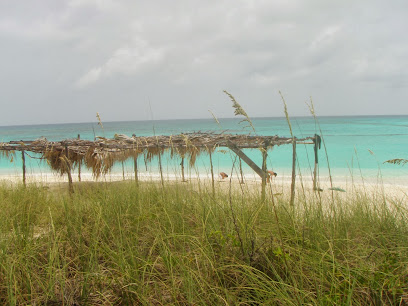
Adderley's Plantation
Immerse yourself in the rich history and natural beauty of Adderley's Plantation, a captivating historical landmark in the Bahamas.

Blue Hole Overlook
Experience the stunning vistas of the Caribbean at Blue Hole Overlook, a must-visit observation deck in Sugar Loaf Settlement.

North Point
Explore North Point in Dixons, a stunning hiking area with breathtaking views and diverse trails for all levels of adventurers.

Cape Santa Maria
Experience the pristine beauty and tranquility of Cape Santa Maria, a hidden paradise in the Bahamas perfect for relaxation and adventure.

Rocky Point
Discover Rocky Point: A breathtaking hiking area along Queen's Highway with stunning views and diverse trails for all levels of adventure seekers.
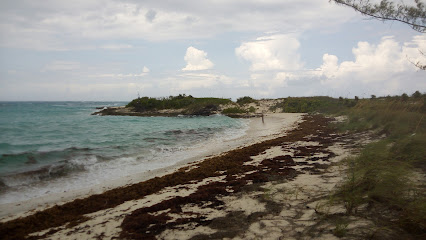
Sandy Point - Shifting Sands
Discover the breathtaking beauty of Sandy Point - Shifting Sands, a serene coastal gem in Sugar Loaf Settlement, perfect for relaxation and nature exploration.

Watling’s Castle
Discover the hidden gem of Watling's Castle in Cockburn Town, where history and culture converge in a serene museum setting.

Crossway
Discover breathtaking views and tranquil surroundings at Crossway Observation Deck in Fortune Hill Settlement, a hidden gem for nature lovers and photographers.

Rice Bay
Explore the breathtaking landscapes of Rice Bay in Dixons, a perfect hiking destination for nature lovers and outdoor adventurers.

Watling's Hole
Experience the breathtaking beauty of Watling's Hole, a hiking paradise in Sugar Loaf Settlement, perfect for outdoor enthusiasts and nature lovers.

Pigeon Creek National Park
Explore the lush landscapes and vibrant wildlife of Pigeon Creek National Park, a serene escape for nature lovers and adventure seekers alike.

Bamboo Point
Explore the breathtaking hiking trails of Bamboo Point, a paradise for nature lovers with stunning views and serene landscapes.

San Salvador
Explore San Salvador, Bahamas – a paradise of breathtaking beaches, rich history, and vibrant local culture, perfect for every traveler seeking adventure.

Essential places to dine
Hidden Treasures Restaurant fine dinning with Chef Trevor
Experience exquisite Bahamian cuisine at Hidden Treasures Restaurant in The Bight Settlement – where local flavors meet culinary artistry.

Riding Rock Resort & Marina
Discover adventure and relaxation at Riding Rock Resort & Marina, your ultimate tropical getaway in Cockburn Town.

Wendy's Snack Bar And Liquor
Discover the laid-back charm of Wendy's Snack Bar And Liquor in Cockburn Town – your perfect stop for refreshing drinks and local flavors.

The Sands Hotel
Discover serenity at The Sands Hotel on San Salvador Island – where comfort meets Bahamian charm amidst stunning natural beauty.

Dorette's
Discover local flavors at Dorette's in Cockburn Town - your ultimate grocery destination for authentic Bahamian treats.

Club Juice
Experience Cockburn Town's nightlife at Club Juice—a vibrant bar serving delicious drinks in a friendly atmosphere.

Columbus Tavern
Experience authentic Bahamian cuisine at Columbus Tavern in Victoria Hill Settlement—where flavor meets affordability in a cozy atmosphere.

Sunset Restaurant
Experience exquisite dining with stunning ocean views at Sunset Restaurant in beautiful Cape Santa Maria.

Ocean View Restaurant and Bar
Experience authentic Bahamian flavors at Ocean View Restaurant and Bar while enjoying stunning seaside vistas in Port Nelson.

Sweet Tambrin
Experience authentic Bahamian cuisine at Sweet Tambrin in Port Howe—where local flavors meet warm hospitality.

Sunset Chill & Grill
Discover Sunset Chill & Grill in Sugar Loaf Settlement – your ultimate destination for tropical drinks and vibrant nightlife.

Carter's Snack Bar
Discover authentic Bahamian cuisine at Carter's Snack Bar, where every dish tells a story and every bite is a taste of paradise.

Lakeview Sporting Lounge
Experience the vibrant nightlife at Lakeview Sporting Lounge in Dixons – where great drinks meet an energetic atmosphere.

Carlie's Takeaway
Experience authentic Bahamian flavors at Carlie's Takeaway in Cockburn Town - where delicious food meets local charm.

Markets, malls and hidden boutiques
Nassau Straw Market
Discover the vibrant Nassau Straw Market, a cultural treasure trove of handcrafted goods and authentic Bahamian souvenirs waiting for you.

Port Lucaya Marketplace
Discover the vibrant Port Lucaya Marketplace, a shopping paradise with fine dining, local arts, and unforgettable Bahamian culture in Freeport.
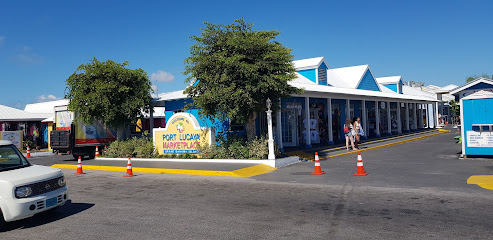
SouthWest Plaza
Explore SouthWest Plaza, Nassau's vibrant shopping mall featuring diverse stores, delicious dining, and a lively atmosphere for tourists and locals alike.
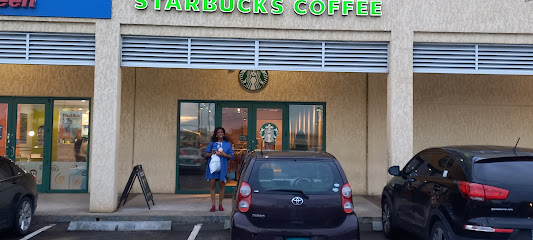
Crystal Court Shops
Discover the ultimate shopping paradise at Crystal Court Shops, where luxury meets Bahamian charm amidst stunning surroundings.
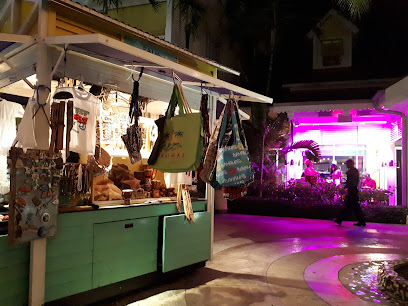
Allure Jewels International
Explore the exquisite jewelry collection at Allure Jewels International in Nassau, featuring diamonds, unique designs, and exceptional service for discerning shoppers.

Marina Village at Atlantis
Experience the vibrant shopping and dining at Marina Village, a gem of Paradise Island offering unique Bahamian crafts and delicious cuisine.

Coral Harbour Shopping Center
Explore the vibrant Coral Harbour Shopping Center in Nassau for a mix of shopping, dining, and local culture in one exciting location.
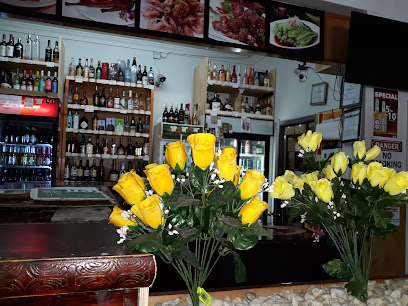
Kay's Fine Jewelry
Unveil the elegance of Bahamian jewelry at Kay's Fine Jewelry in Downtown Nassau, where every piece tells a unique story.

San Salvador Island
Immerse yourself in the serene landscapes and rich history of San Salvador Island, a Bahamian paradise for beach lovers and adventure seekers.

Bahama Art and Handicraft
Discover unique Bahamian artistry at Bahama Art and Handicraft, where every piece is a reflection of local culture and creativity.

Alvernia Food Store
Discover Alvernia Food Store in Cat Island for affordable groceries and local products that showcase the Bahamian spirit.

Only Blue - Diving Dreams
Experience the underwater wonders of the Bahamas at Only Blue - Diving Dreams, the ultimate diving resort in Cockburn Town, where adventure meets tranquility.
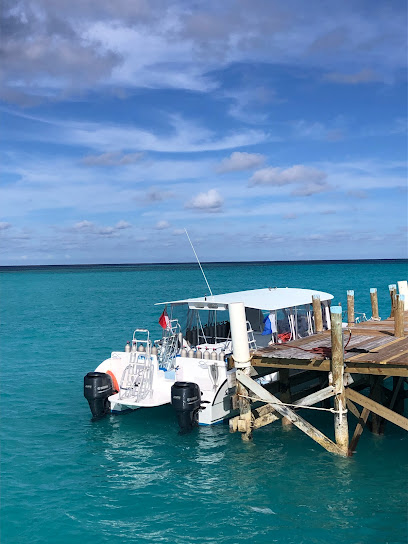
Riding Rock Resort & Marina
Experience the enchanting beauty of Riding Rock Resort & Marina in Cockburn Town, Bahamas – where relaxation meets adventure on the stunning shores.

Bahama Hand Prints
Explore Bahama Hand Prints for unique, vibrant fabrics and clothing that celebrate the rich cultural heritage of the Bahamas.

Festival Place
Discover a vibrant shopping experience in Nassau at Festival Place, where local crafts and international brands meet.

Essential bars & hidden hideouts
Wendy's Snack Bar And Liquor
Discover the vibrant atmosphere of Wendy's Snack Bar And Liquor in Cockburn Town, where delicious snacks and refreshing drinks await every visitor.

The Sands Hotel
Experience tranquility and adventure at The Sands Hotel, your gateway to the stunning beaches and rich history of San Salvador Island.

Club Juice
Discover the vibrant nightlife at Club Juice, a must-visit bar in Cockburn Town offering delicious drinks and a lively atmosphere.

Moonshine Beach Bar
Experience the serene beauty of Moonshine Beach Bar in Stella Maris, offering delightful cuisine and stunning ocean views for an unforgettable tropical escape.

Columbus Tavern
Experience authentic Bahamian flavors at Columbus Tavern - a local favorite for delicious, affordable dining in Victoria Hill Settlement.

Kaye's Bar
Experience the vibrant atmosphere and delightful flavors at Kaye's Bar in Port Nelson, where every sip and bite is a taste of paradise.

The Shortstop
Experience the lively atmosphere and affordable drinks at The Shortstop, a must-visit bar in Dixons for tourists seeking local nightlife.

Guanahani Beach Club
Explore the beauty of Guanahani Beach Club, where tropical relaxation meets thrilling adventure in Cockburn Town.

Busted Bridge Bar and Grill
Experience the vibrant flavors and lively atmosphere at Busted Bridge Bar and Grill, your coastal retreat in Seymour.

Sweet Lips
Experience Sweet Lips, the ultimate bar in Smith's Bay for refreshing cocktails, stunning ocean views, and a relaxing atmosphere.

Docky's Flats Bar
Experience the vibrant flavors of the Bahamas at Docky's Flats Bar, a top destination for grill lovers in Stella Maris, where every meal is a celebration.

Toby's
Discover Toby's in Port Nelson, where vibrant nightlife, expertly crafted cocktails, and a welcoming atmosphere await every visitor.

Sunset Chill & Grill
Experience the vibrant atmosphere at Sunset Chill & Grill, where stunning sunset views, refreshing cocktails, and local vibes create the perfect tropical escape.

Carter's Snack Bar
Discover the authentic taste of the Bahamas at Carter's Snack Bar in Cockburn Town, where local flavors and warm hospitality await you.

Murph’s Tiki Bar & Grill
Experience the vibrant atmosphere of Murph’s Tiki Bar & Grill in Cockburn Town, a tropical escape with delicious cuisine and refreshing cocktails.

Local Phrases about San Salvador Island
-
- HelloHey
[Hey] - GoodbyeBye
[Bye] - YesYeah
[Yeah] - NoNah
[Nah] - Please/You're welcomePlease/You're welcome
[Please/You're welcome] - Thank youThank you
[Thank you] - Excuse me/SorryExcuse me/Sorry
[Excuse me/Sorry] - How are you?How you doin'?
[How you doin'?] - Fine. And you?I cool. You?
[I cool. You?] - Do you speak English?You speak English?
[You speak English?] - I don't understandI eh catch dat
[I eh catch dat]
- HelloHey
-
- I'd like to see the menu, pleaseI wan see di menu please
[I wan see di menu please] - I don't eat meatI nah eat meat
[I nah eat meat] - Cheers!Cheers!
[Cheers!] - I would like to pay, pleaseI wan pay please
[I wan pay please]
- I'd like to see the menu, pleaseI wan see di menu please
-
- Help!Help!
[Help!] - Go away!Go way!
[Go way!] - Call the Police!Call de Police!
[Call de Police!] - Call a doctor!Call a doctor!
[Call a doctor!] - I'm lostI lost
[I lost] - I'm illI sick
[I sick]
- Help!Help!
-
- I'd like to buy...I wan buy...
[I wan buy...] - I'm just lookingI just looking
[I just looking] - How much is it?How much dis is?
[How much dis is?] - That's too expensiveDat too much money
[Dat too much money] - Can you lower the price?Can you drop de price?
[Can you drop de price?]
- I'd like to buy...I wan buy...
-
- What time is it?What time it is?
[What time it is?] - It's one o'clockIt one o'clock
[It one o'clock] - Half past (10)Half past (10)
[Half past (10)] - MorningMornin'
[Mornin'] - AfternoonAfternoon
[Afternoon] - EveningEvenin'
[Evenin'] - YesterdayYestaday
[Yestaday] - TodayToday
[Today] - TomorrowTomorra
[Tomorra] - 11
[1] - 22
[2] - 33
[3] - 44
[4] - 55
[5] - 66
[6] - 77
[7] - 88
[8] - 99
[9] - 1010
[10]
- What time is it?What time it is?
-
- Where's a/the...?Where dat...?
[Where dat...?] - What's the address?What de address?
[What de address?] - Can you show me (on the map)?Can you show me (on the map)?
[Can you show me (on the map)?] - When's the next (bus)?When de next (bus)?
[When de next (bus)?] - A ticket (to ....)A ticket (to ....)
[A ticket (to ....)]
- Where's a/the...?Where dat...?
History of San Salvador Island
-
On October 12, 1492, Christopher Columbus made his historic landfall on San Salvador Island, marking the beginning of European exploration in the Americas. Known then as Guanahani by the indigenous Lucayan people, the island was the first land Columbus sighted and explored in the New World. This event is commemorated with a cross and a monument at Long Bay, believed to be the exact landing site.
-
Before European contact, San Salvador Island was inhabited by the Lucayan Indians, a branch of the Taino people. They were skilled farmers, fishermen, and navigators who lived in harmony with their environment. Archaeological sites across the island, such as the Pigeon Creek site, provide insights into their way of life and culture prior to their tragic decline due to diseases and enslavement following European arrival.
-
During the late 17th and early 18th centuries, the waters around San Salvador Island were frequented by pirates and privateers. The island's strategic location made it a useful hideout and staging point for attacks on Spanish galleons laden with treasure. Legends and lore about hidden pirate treasures still capture the imagination of visitors today.
-
In the late 18th century, following the American Revolution, British Loyalists fled to the Bahamas, including San Salvador Island. They established plantations and brought enslaved Africans to work the land. Although the plantations eventually declined, the cultural and architectural influences of the Loyalist period are still evident in some of the island's buildings and local customs.
-
During World War II, San Salvador Island played a strategic role as a base for anti-submarine warfare. The United States established a naval air station on the island to protect the Atlantic shipping lanes from German U-boats. The remnants of these wartime installations, including a runway and bunkers, can still be explored by history enthusiasts.
-
In the latter half of the 20th century, San Salvador Island transitioned towards tourism as its primary economic activity. The island's pristine beaches, clear waters, and rich history have made it a popular destination for divers, historians, and vacationers. Resorts, museums, and guided tours offer immersive experiences that highlight the island's unique cultural heritage and natural beauty.
San Salvador Island Essentials
-
San Salvador Island can be reached by air and sea. The most common way is to fly into San Salvador International Airport (ZSA), which receives regular flights from Nassau, the capital of The Bahamas, as well as from other islands and international destinations. From Nassau, the flight typically takes around 1 hour. Alternatively, private yachts and charter boats can dock at various marinas around the island, but always check local maritime regulations before setting sail.
-
Once on the island, transportation options include rental cars, taxis, and bicycles. Rental cars are available at the airport and in major towns, providing the flexibility to explore at your own pace. Taxis can be found at the airport and major hotels but may need to be arranged in advance for longer trips or tours. Bicycles offer a leisurely way to explore the island's scenic routes and are available for rent in several locations.
-
The official currency is the Bahamian Dollar (BSD), which is pegged to the US Dollar (USD) at a 1:1 rate, meaning both currencies are accepted interchangeably. Credit and debit cards are widely accepted in hotels, restaurants, and larger shops, but it is advisable to carry some cash for smaller purchases and in more remote areas. ATMs are available, but it’s a good idea to withdraw sufficient cash before traveling to more secluded parts of the island.
-
San Salvador Island is generally safe for tourists, with low crime rates. However, standard travel precautions should be taken. Avoid walking alone at night in unfamiliar areas and be cautious with your belongings in crowded places. There are no specific high-crime areas targeting tourists, but it’s always best to stay vigilant and aware of your surroundings.
-
In case of emergency, dial 911 for immediate assistance. Medical facilities are available on the island, including a small hospital and clinics. It is recommended to have travel insurance that covers medical emergencies. For minor health issues, pharmacies are available where you can purchase over-the-counter medications. Always keep a list of emergency contact numbers, including your country's embassy or consulate.
-
Fashion: Do dress comfortably and modestly, especially when visiting religious sites. Avoid overly revealing clothing. Religion: Do respect local customs and traditions, particularly when visiting churches. Public Transport: Do be patient and respectful when using local taxis or shuttle services. Greetings: Do greet locals with a friendly 'hello' or 'good day'. A handshake is also common. Eating & Drinking: Do try local Bahamian dishes and accept food offerings graciously. Don’t refuse hospitality, as it can be considered impolite.
-
To experience San Salvador Island like a local, visit the local markets where you can buy fresh produce and traditional Bahamian goods. Engage with locals, who are often friendly and willing to share stories about the island's history and culture. Don’t miss visiting historical sites such as the Dixon Hill Lighthouse and the various monuments commemorating Christopher Columbus’s landing. For a unique experience, join a local fishing trip or explore the island’s beautiful coral reefs through snorkeling or diving.
Nearby Cities to San Salvador Island
-
Things To Do in Exuma
-
Things To Do in Eleuthera
-
Things To Do in Harbour Island
-
Things To Do in Nassau
-
Things To Do in Providenciales
-
Things To Do in Andros Town
-
Things To Do in Parrot Cay
-
Things To Do in Pine Cay
-
Things To Do in Grace Bay
-
Things To Do in North Caicos
-
Things To Do in Middle Caicos
-
Things To Do in South Caicos
-
Things To Do in Cockburn Town
-
Things To Do in Grand Turk
-
Things To Do in Salt Cay









